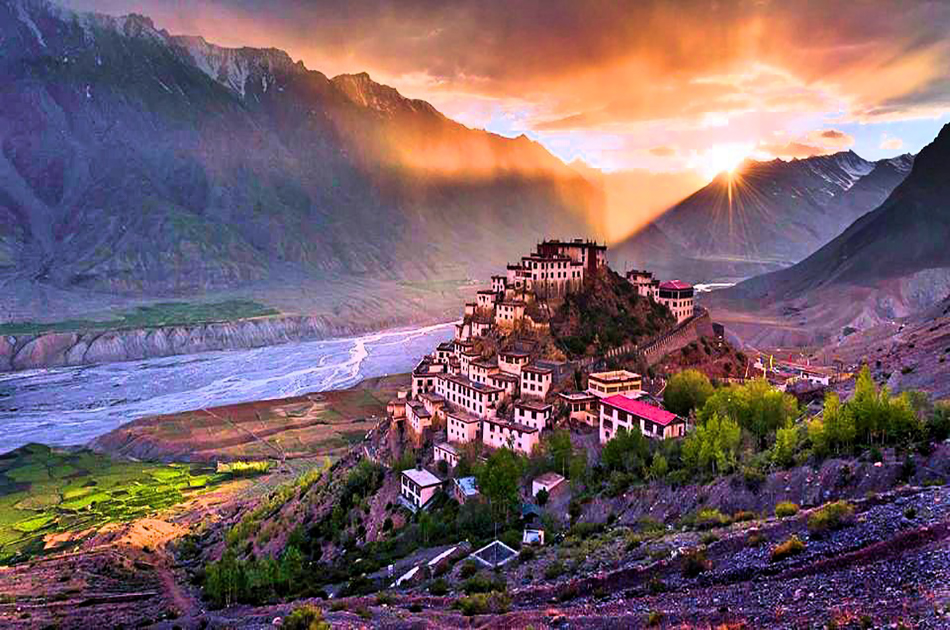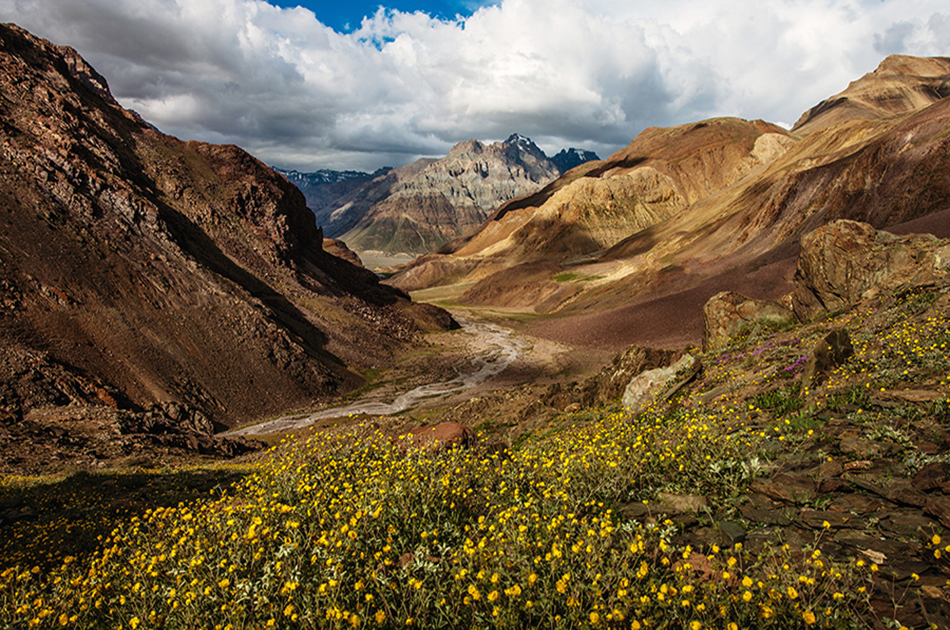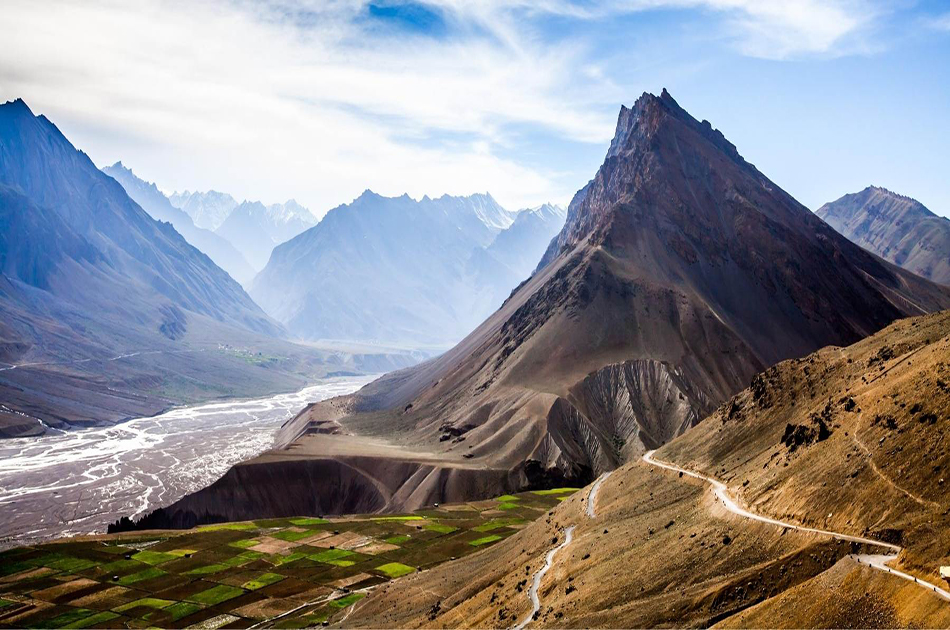About
The Spiti Valley is a scenic paradise that evokes feelings of peace and spirituality
due to its abundance of Buddhist monasteries and outstanding natural landscapes, the
most of which have not been explored and are consequently untouched. The unpolluted
and quickly moving Spiti river has shaped the jagged scenery of the valley, which is
found in Himachal Pradesh. The river travels through a number of steep gorges and
valleys on its way to the Spiti valley. Rafting is one of the most popular types of
water activities that can be done on the river. Outdoor activities like as hiking,
paragliding, and camping are made more enjoyable by the verdant and emerald
landscape of the valley, which is encircled on all sides by mountains that are
covered in snow. Spiti is sometimes referred to as “Little Tibet” because of its
topography, vegetation, and climate being so like to those of Tibet. It is
surrounded by the regions of Lahaul, Ladakh, Kinnaur, and Kullu, and it is located
at an altitude of 2,745 metres above sea level. The Kumzum La, also known as the
Kumzum Pass, is the mountain pass that marks the border between the two regions of
Lahaul and Spiti Valley.
The Winter Spiti Expedition is widely regarded as one of the very finest adventure
tours that visitors to the Himalayas may go on during the winter months in order to
get snow-related experience. The Winter Spiti Trip is all about a chilly desert
mountain valley high in the Himalayan Mountains in the north-eastern corner of the
Indian state of Himachal Pradesh. The territory that is situated between Tibet and
India is referred to as Spiti, which literally translates to “Middle Ground.”
Itinerary
Things to Carry
• Footwear: The trekking boots which must be waterproof and snow proof, normal boots,
floaters, and woolen socks.
• Backpack: (50 ltr), Daypack (20-30 ltr), Duffel bag.
• Clothes: Jacket and trousers that are both waterproof and breathable. Jacket
(synthetic or down feather fleece), synthetic insulated trousers, poncho,
sweatshirt, inner thermal (upper & lower), fleece, t-shirts, cotton trekking pants,
shorts.
• Season wise Clothes:
• Hand and head protection includes liner gloves, bandannas, sun hats, woollen caps,
and face masks, among other things.
• Accessories: Sunglasses/goggles, anti-glare lenses, water bottle, hydra bag, and
headlamp with spare bulb and extra batteries are all recommended.
• Trekking Gears: Toolkit for an emergency. Sunscreen, a toiletry pack, water
purification pills, Ziploc packs, ear plugs, first-aid kit, and the necessary
medications are all recommended.
• Camping Equipment: Sleeping bags of lining (extreme -5 to +5 Celsius if you have
one), trekking sticks, and so on.
• Warm top/light micro fleece pullover/full sleeve T shirt – 2/3.
• Water resistant/repellent trekking pants with an inner lining for added warmth- 2
High-quality windproof/water-resistant outer shell (jacket) with a proper hood.
• Thick Fleece / Full-sleeve Woollen Jumper, Down Jacket with at least 600 fill
capacity Innerwear with a thermal component (upper and lower).
• Woolen hat, inner fleece gloves, and outer water-resistant gloves.
• 4–5 pairs of thick woollen socks and standard socks, scarf/muffler (optional)
• Waterproof Trekking/Hiking shoes with a thick heel and high ankles that are
comfortable to wear. Sneakers/sport shoes are ideal for camp.
• Poncho or raincoat. A small, light-weight towel.
• A hydration pack and an insulated water bottle (optional)
• Sunglasses with UV cover and the potential to cut light, as well as a cap or
floppy hat to shield the strong sun off your skin (important when traversing through
snow)
• Trekking pole or sturdy walking stick Lip Balm, Sunscreen Lotion
• Flashlight / torch (with extra batteries) Medications, if any special prescription
is needed Toiletries for personal use
• Carry a rain cover over your luggage • Day pack/small bag that you can carry on
your back all day to keep your essentials in
• Keep a few poly bags or plastic containers in your bag to place your things in if
you need to in case of heavy weather.
Personal Medical Kit (MANDATORY FOR ALL)
• 10 Diamox tablets (to prevent AMS)
• Nifedipine – 5 pills Dexamethasone – one strip
• 6 tablets of Crocin (fever)
• 4 tablets of avomine (motion sickness) 4 capsules of Avil 25mg (allergies)
• 4 tablets of Combiflam (Pain killer)
• 6 tablets each of Norflox TZ and Lomofen (diarrhea) 10 tablets of Digene
(acidity)
• 10 Omez/Rantadine capsules (antacids) 3 to 5 metres of crepe bandage
• Keep a few poly bags or plastic containers in your bag to place your things in if
you need to in case of heavy weather.
• 1 tiny roll of gauze 10 strips of bandage 1 small roll of cotton 10 packets of
ORS
• Moov spray Betadine or other antiseptic cream (aches, & sprains)
• If you're vulnerable to knee injuries, you should wear a knee cap. Powder with
antifungal properties
What we'll give/What we won't:
Cost includes:
• Transport from Delhi to Shimla and return via Volvo busPick and Drop Service from mentioned location.
• Accommodation on Sharing basis.
• Breakfast and Dinner.
• SUV/ Tempo traveller
• Bonfire (if available)
• All permits.
• Safety Kits.
• Expert Guide.
• Completion Certificate.
Cost Excludes:
•Anything that is not mentioned in inclusions.
• GST 5%
• Alcohol, colddrinks etc.
• Personal Expenses.







